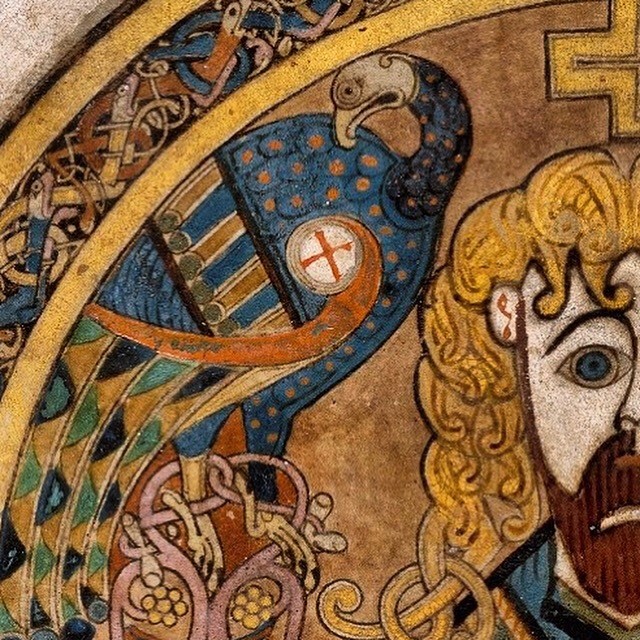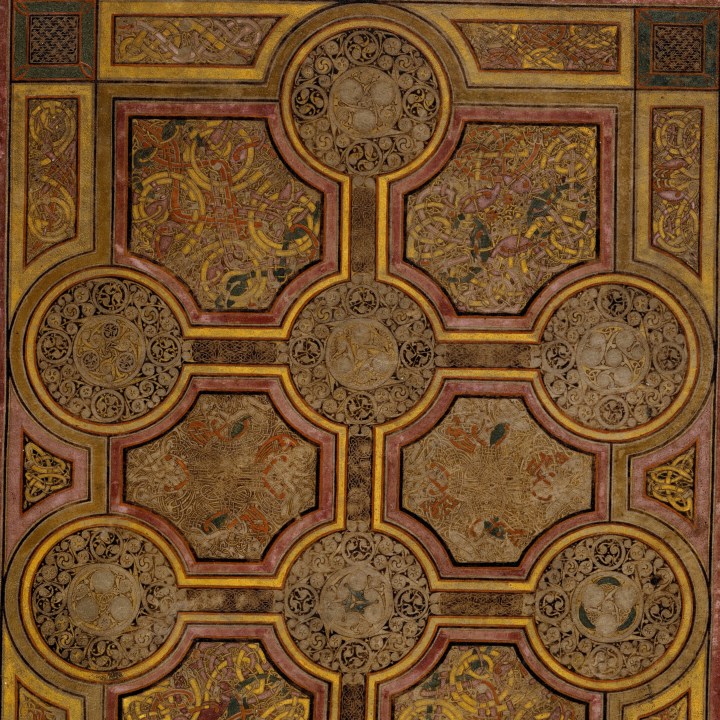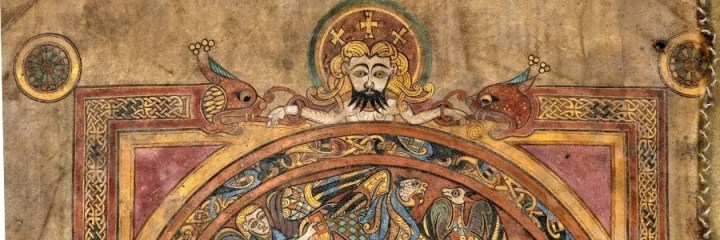
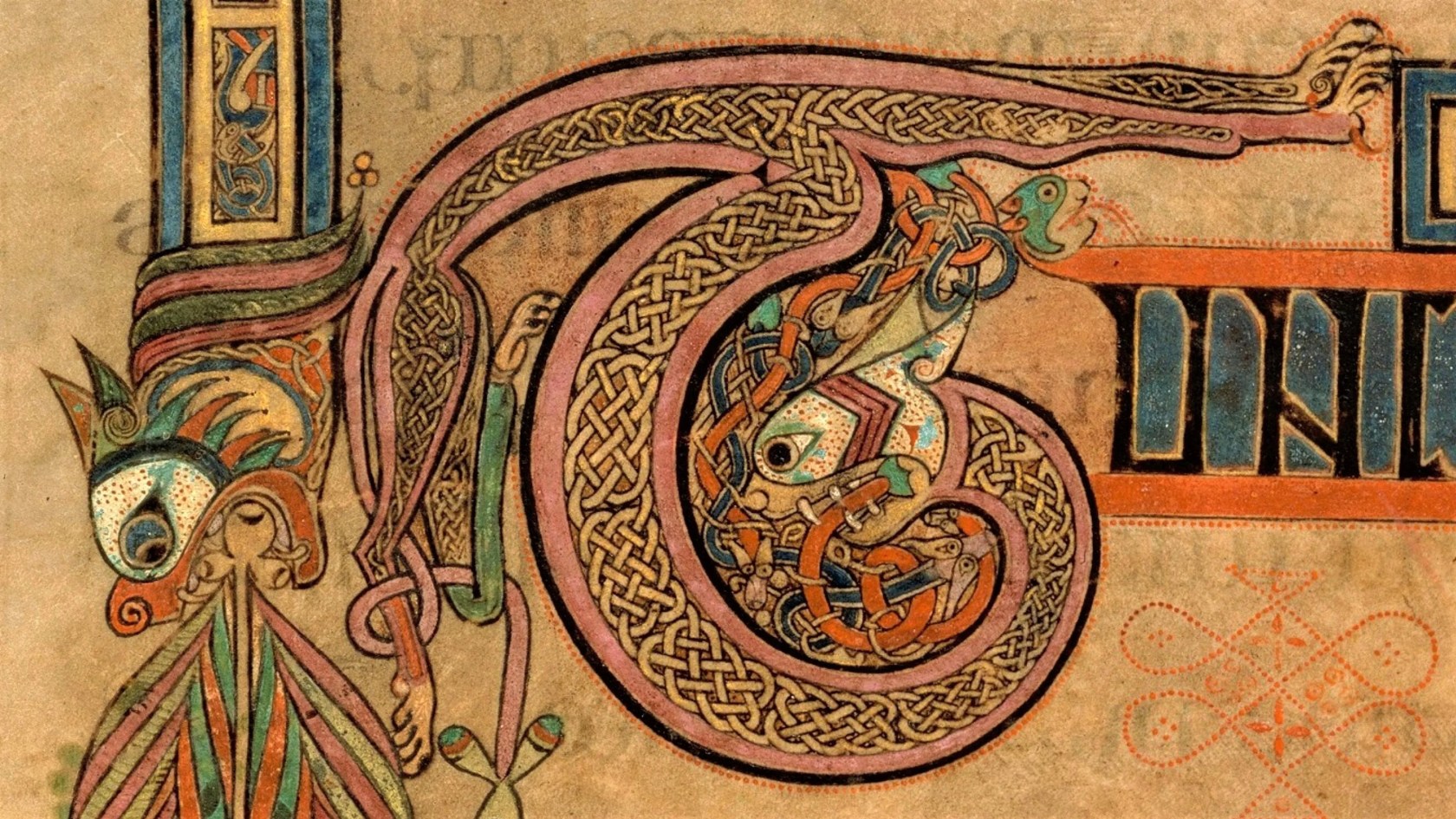
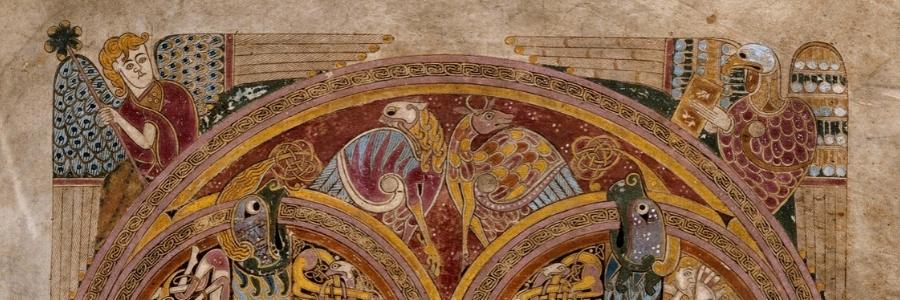
This year, the Book of Kells Creative Competition invites contestants to share art and writing that evoke the beautiful colours featured in the Book of Kells, the 9th century masterpiece renowned for its rich, colourful symbolism. Let’s learn more about the animal symbolism behind the famous book:
The Book of Kells, housed in the Old Library at Trinity College Dublin, is a fascinating manuscript. When we take a closer look at its creativity, the book emerges as a rich source of symbolism which continues to inspire artists to this day.
The manuscript is first and foremost a Book of the Gospels. Its clever use of symbolism tells the story of Christianity, namely through decorative illustrations. Many of these images are of animals, including snakes, peacocks, lions, hares, and mice. These figures are used to communicate a deeper meaning to the reader about the Christian faith.
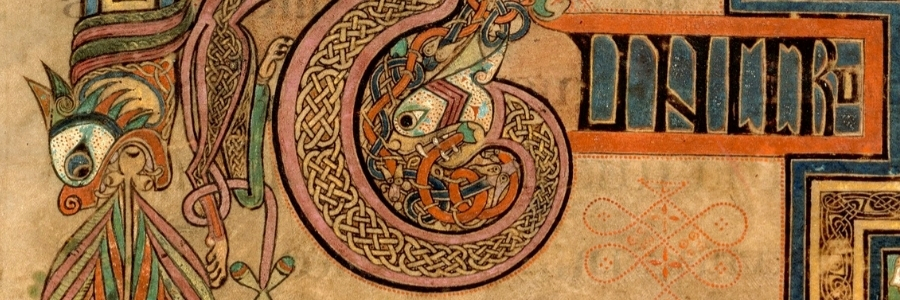
Lions
Lions, for example, appear in the book exhaling a colourful breath. This is connected to the medieval belief that lion cubs are born dead, and that following birth, the male lion returns after three days to breathe upon the cub to bring them to life. There are parallels here between the lion cub and Jesus Christ, who is thought to been resurrected three days after his death.

Snakes
Similarly, snakes within the book also have a double meaning. The creatures are usually thought of as representing evil in the world – as in the Garden of Eden – and are synonymous with the devil. However, an alternative meaning can be gleaned from the book’s serpents too, as they shed their skins and renew themselves, which could again represent the resurrection of Christ.

Peacocks
Peacocks, too, carry a Christian message within the Book of Kells. The beautiful birds are integral to the decoration of most of the major pages in the manuscript. They appear at the end of text lines and in prime positions next to images of Christ. They are thought to represent Christ’s incorruptibility or immortality, due to the ancient belief that peacock flesh does not decay.
Feeling inspired?
Enter the Book of Kells Creative Competition to showcase your creative flair and use of symbolism at Trinity. Entry is free and the closing date is 30 October 2020.
Best of luck!
